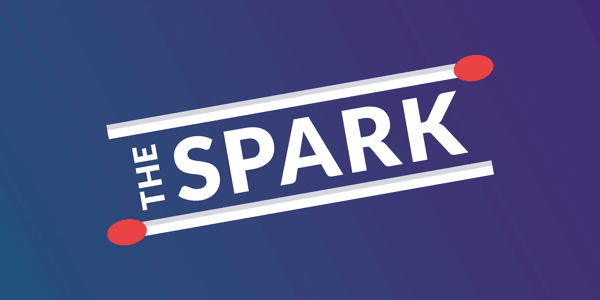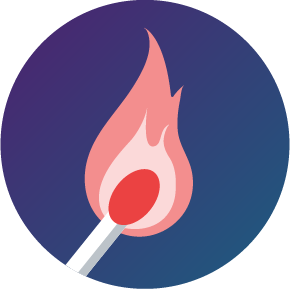New Algorithm, Who Dis?You know when you hear a word so many times it stops having any meaning at all? That's how we feel about algorithm. And yet, most marketers are at the mercy of the latest updates. Instagram has updated the way it ranks content, so let's break down what's changed and what it means for us B2B folks.
To maintain visibility and improve your post ranking, you will want to focus on these three factors: Product Tags, Enhanced Tags, and Ranking for originality. Let’s start with ranking for originality as this is the piece of the algorithm puzzle where small businesses have the best opportunity to shine.
Ranking for originality means if you create something new, it should get more attention than the viral meme a satire account might reshare. Why has Insta made this move? It believes the heart of the platform is creators, who put a lot of hard work into their social shares. Instagram knows overvaluing aggregators would be bad for creators, and therefore bad for Instagram in the long term.
Instagram is also favoring its special tagging features because they want users to drive traffic to the businesses and accounts they love. Product Tags allow you to tag a specific product from a business, like a new pair of earrings or a fresh pair of sneakers or the amazing software your company offers! Enhanced Tags were designed to give credit to all collaborators in a post — think photographers, customers in testimonials, keynote speakers, or brands you are partnering with. If your business has products that consumers could be tagging, be sure to go to your profile settings and make some updates. You won't want to miss the opportunity for some user-generated content!
The takeaway: Focus on generating original content and less on the number of hashtags you are using. Your brilliant ideas will help give your content a nudge to the top of the feed, so keep thinking of new and innovative content to share on your page, including reels!
TL;DR: Instagram has updated its algorithm to favor originality, so marketers may want to reevaluate their content strategy. Focus on unique content to succeed on the app.
The Cookieless MonsterRecent privacy changes mean cookies are being phased out (and we don't mean the dessert). With big players like Apple and Google at the forefront, tracking website visitors and serving tailored advertisements will get a lot harder.
So here’s some food for thought as we head into a cookieless world. Google will be using a cookie alternative that allows advertisers to target based on a more generalized view of interests, like fitness, cooking, or sports — refreshed every three weeks based on browsing history. Meanwhile, Apple outlawed the use of unauthorized third-party cookies on the Safari browser. Soon, the company will require all apps and websites running on their devices to get consumer permission before tracking any data.
That means it's time to focus on collecting first-party data or consider purchasing second-party data. First-party data comes directly from your consumer and is highly valuable because you know it's accurate. There are multiple ways of asking your audience for their info. We’ve seen some brands get creative with AR, but you can do something as simple as asking for an email in exchange for a white paper download. You could also run lead-gen campaigns on LinkedIn or Facebook to gain more customer insights. You can learn a lot about your audience from their provided data, like traits they may have in common (job title, locations, etc.) and track their interactions. You can use this info to make decisions on the types of ads you run or how you will tailor your web experience. Learning from your existing customer is a great start to expanding to a new audience.
TL;DR: With both Apple and Google making big changes to their privacy and data policies, marketers need to focus on collecting first-party data to maintain their targeted ads and lead-gen tactics.
What Lit Us UpOrange You Glad You Searched?Through a new partnership with Pinterest, Jameson Orange is targeting consumers who search for the word orange and variations of it — orange aesthetic, orange chicken, and orange nails for example. Before we go any further, we know a lot of our recent What Lit Us Up stories have focused on alcohol brands. But we promise there’s a good reason for our spirit-centered content: creativity.
Back to our previously scheduled programming: When people search for orange as either a flavor or color on Pinterest (a popular platform to find food and drink choices), the new flavored liqueur will appear in the results. In addition to boosting new product awareness, this partnership serves to help Jameson reach young consumers, whose alcohol consumption preferences are more selective and still evolving.
Jameson Orange’s partnership with Pinterest is a great example of contextual targeting, a strategy that’s sure to become more popular as we head into the aforementioned “cookieless future.” Contextual targeting offers an alternative and effective way to target your intended audience by placing advertisements on a website with related content, without tracking consumers through cookies. Another example of contextual targeting is Google Topics, and AI tools will continue to enhance its capabilities.
As new privacy laws demand marketers find different ways to reach their audience, brands need to find a creative workaround. Contextual targeting is one smart way to recalibrate for the future.
TL;DR: A partnership between Jameson Orange and Pinterest utilizes contextual targeting, a key strategy in reaching audiences as we move toward a cookieless future. Add it to your marketing toolbox to stay ahead of the curve. (Was this email forwarded to you? Sign up here.)
|
-1.png?upscale=true&width=346&upscale=true&name=Tier%20One%20logo_color%20(1)-1.png)


